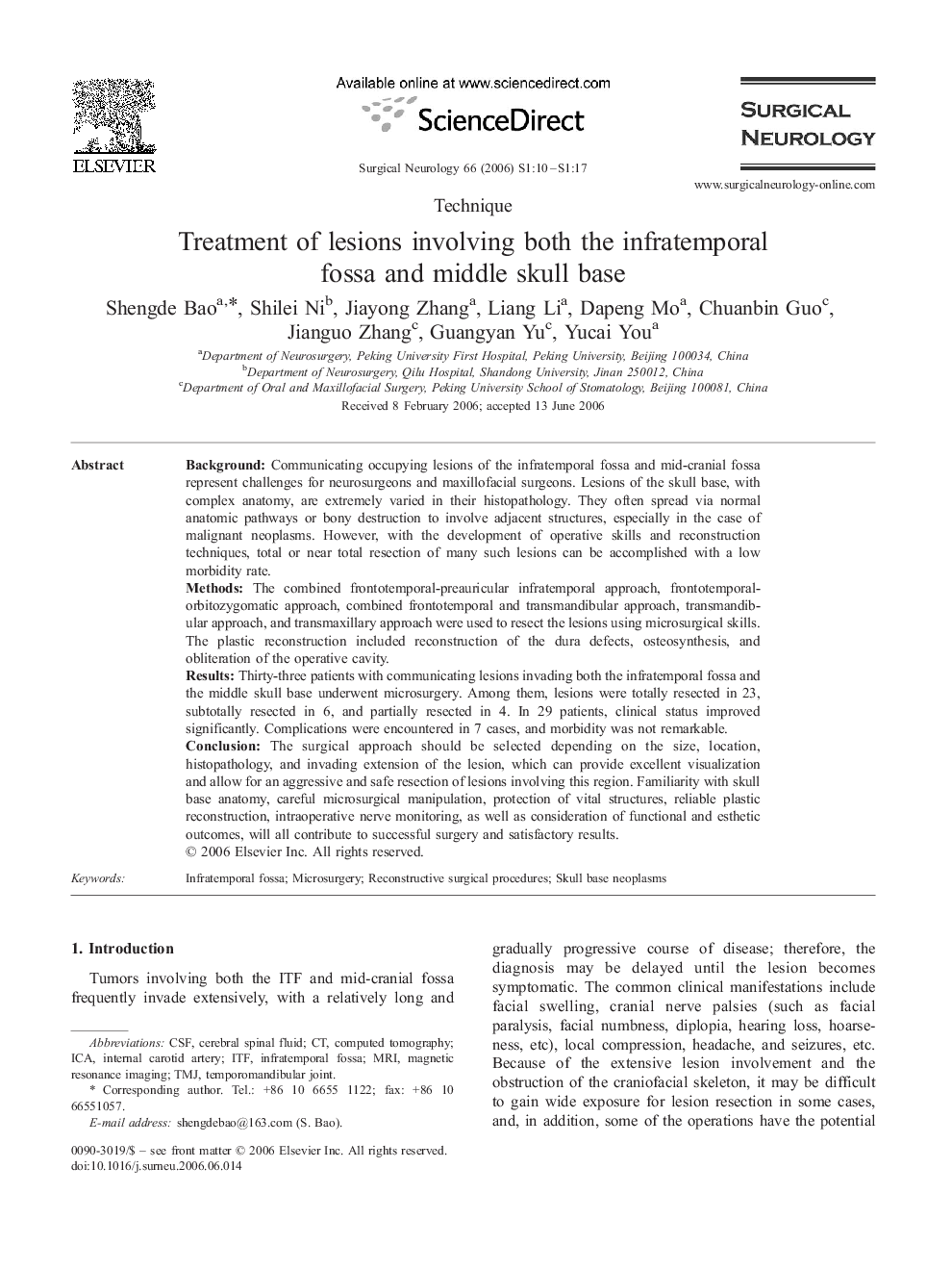| Article ID | Journal | Published Year | Pages | File Type |
|---|---|---|---|---|
| 3094115 | Surgical Neurology | 2006 | 8 Pages |
BackgroundCommunicating occupying lesions of the intratemporal fossa and mid-cranial fossa represent challenges for neurosurgeons and maxillofacial surgeons. Lesions of the skull base, with complex anatomy, are extremely varied in their histopathology. They often spread via normal anatomic pathways or bony destruction to involve adjacent structures, especially in the case of malignant neoplasms. However, with the development of operative skills and reconstruction techniques, total or near total resection of many such lesions can be accomplished with a low morbidity rate.MethodsThe combined frontotemporal-preauricular infratemporal approach, frontotemporal-orbitozygomatic approach, combined frontotemporal and transmandibular approach, transmandibular approach, and transmaxillary approach were used to resect the lesions using microsurgical skills. The plastic reconstruction included reconstruction of the dura defects, osteosynthesis, and obliteration of the operative cavity.ResultsThirty-three patients with communicating lesions invading both the infratemporal fossa and the middle skull base underwent microsurgery. Among them, lesions were totally resected in 23, subtotally resected in 6, and partially resected in 4. In 29 patients, clinical status improved significantly. Complications were encountered in 7 cases, and morbidity was not remarkable.ConclusionThe surgical approach should be selected depending on the size, location, histopathology, and invading extension of the lesion, which can provide excellent visualization and allow for an aggressive and safe resection of lesions involving this region. Familiarity with skull base anatomy, careful microsurgical manipulation, protection of vital structures, reliable plastic reconstruction, intraoperative nerve monitoring, as well as consideration of functional and esthetic outcomes, will all contribute to successful surgery and satisfactory results.
